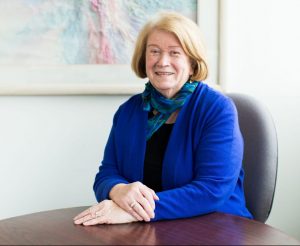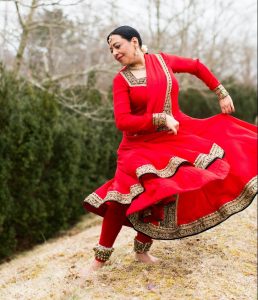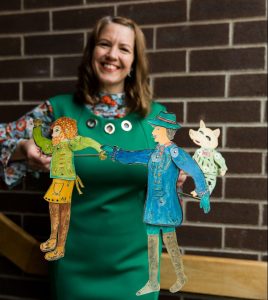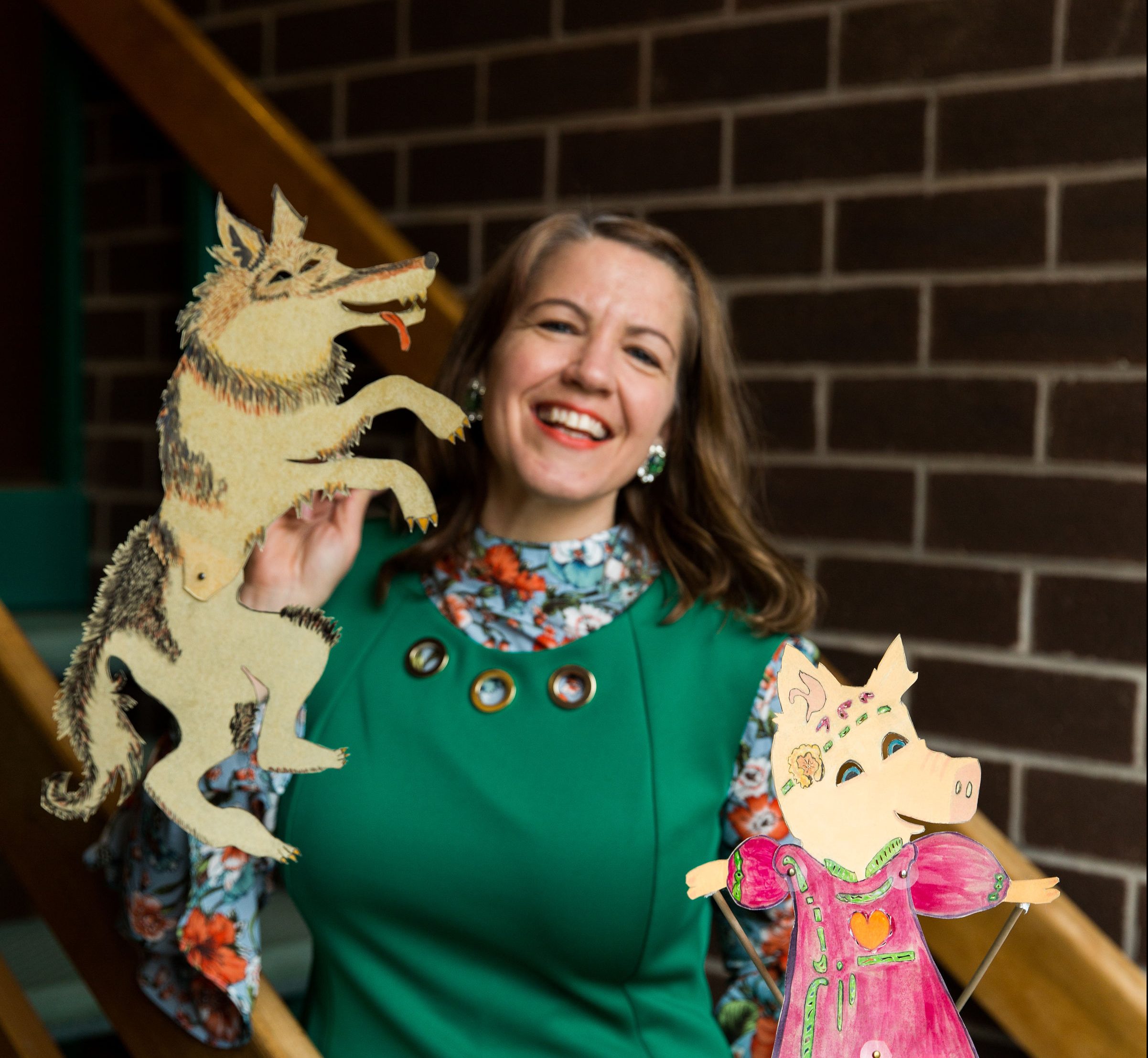The arts are embraced more and more as a conduit, connecting students to every subject from English to science to history. The arts also serve as a window into different cultures and ideas, even helping to heal racial and ethnic divides.
In education, the acronym STEM (Science, Technology, Engineering and Math) has evolved to STEAM, adding an A for Arts, as proof of the power of creativity to open minds and change hearts.
Arts for Learning Connecticut (AFLCT) knew this back in 1979 when it was founded and continues to embrace those principles as it celebrates its 40th year.
An affiliate of the national program Arts for Learning – and previously called Young Audiences – AFLCT began at the University of Bridgeport as a music program offered in public schools. Incorporated as a non-profit in 1984, it relocated to New Haven for the next 17 years, where Executive Director Margaret Levine substantially increased funding and grew the program’s artists’ roster to include cultural and dance groups.

In 1997, the office moved to its current location in Hamden. Under the leadership of Eileen Carpinella, who joined the staff in 1995 and took the helm as executive director in 2003, AFLCT now includes more than 100 professional performing and teaching artists in all disciplines, offering programs to 250,000 school children, as well as to libraries and community centers in 87 percent of cities and towns statewide.
It is now the state’s oldest and largest arts-in-education non-profit organization.
Carpinella, who is retiring this year, says she still remembers the very first program she saw at Silas Deane Middle School in Wethersfield.
“It was ‘Two For Freedom,’ a historical story about two African Americans and how they got their freedom,” she says. “It was so powerful and made me so proud to have just joined this organization that made such an impact on these students. In the whole auditorium, you could have heard a pin drop. And it was middle school students! It always amazes me – the power of the arts to transform a place, what’s happening at that very moment, and how involved students are in learning from that art form.”
Carpinella believes it’s the hands-on, participatory approach with a big focus on sharing cultures from around the world that makes AFLCT stand out from other arts organizations in the state.

Teaching Artists Tell Their Stories
Efraim Silva of West Haven, founder and artistic director of Ginga Brasileira dance company, has been exposing students to Brazilian dance and culture for more than 25 years through AFLCT. The professional ensemble performs a repertoire of Afro-Brazilian dances that fuse rhythmic music with Capoeira, a high-energy martial arts dance form.
“I came from a family of 13 kids and I started doing Capoeira when I was 13 to defend myself against some of my brothers, being one of the small ones. But by learning Capoeira, I never had to fight anyone because everyone knew I could fight.”
Silva left home at 17 and has been practicing his art form ever since. He came to the U.S. in 1989, settling in Bridgeport, where he had family. His sister and brother-in-law encouraged him to find another way of making a living because nobody knew what Capoeira was. But it was his passion, and within five years, he had connected with what was then Young Audiences. Silva is convinced that if it weren’t for AFLCT, he wouldn’t be the artist he is today, performing all over the world.

Students love Ginga Brasileira’s performances, but there is a larger message Silva is always conveying, which is, “No matter where you come from, what language you speak, we can always learn from each other, love each other, and if we allow the space to be creative between anyone – men, women, black, white, fat, skinny – we can always make a difference.”
He adds, “I have the most incredible job; I love every second of it,” he says. “It never gets old. What keeps me alive and full of energy is because I work with children.”

Like Silva, Rachna Ramya of Simsbury has been a teaching artist with AFLCT for many years, starting in 1997. And like Silva, it was AFLCT that made it possible for her to keep dancing professionally.
“When I came to the U.S. from India 30 years ago, everyone said, ‘Oh, you won’t be able to make it as an Indian dancer in this country,’” so I applied for my MBA. I got a job with a [financial company] but soon gave my resignation. That was a deciding moment for me that I was only going to be a dancer.”
As a teaching artist, Ramya performs Kathak, a North Indian classical temple dance, which originated more than 2,000 years ago. She also has her own Sumbhaav School of Kathak Dance, as well as a dance company that performs throughout the United States.
She finds that her work with students hasn’t changed over the years as much as it has become more intense.
“America is a melting pot of cultures. And we have cultural tensions and tensions about sexuality, and ideas about what women can do,” she observes. “So I bring social justice issues in right now that I talk to kids about and translate into my dance pieces.
“What’s wonderful about all the staff here,” she adds, “is they understand art. They also understand education. So they propel us artists in a way that we can make a real difference in the school system.”

A new addition to the AFLCT roster is puppeteer Kim Van Aelst of Hamden. She has performed her Oompapossum Puppets show in schools, museums, and at festivals throughout the state.
An occupational therapist, Van Aelst has worked in schools for many years, but says she never lost her passion for puppetry, which began as a young child, inspired by watching Sesame Street, The Muppet Show, and Mr. Rogers’ Neighborhood on TV.
Although she had been a puppeteer for a while, she decided to go back to school to study puppetry at the UConn School of Fine Arts, “to do it professionally,” she says. “I always had [AFLCT] in my web browser and I contacted them when I graduated. I wanted to really raise the bar.”
Van Aelst makes her own puppets, designs her own sets and lighting, and writes her own scripts based on classic tales and stories. She even writes and performs songs.
“I do it all. I’m truly a one-woman show,” she says.
She also leads workshops after performances. During the workshops, students can both interact with and make their own puppets.
Van Aelst’s favorite part of performing for children is when “all the kids are sitting there, cross-legged, so excited for the puppet show to start. I can feel the excitement in the air. I’m smiling and laughing behind the screen because I’m having such a good time.”

Art Keeps Opening Doors
Carpinella admits it will be hard leaving AFLCT but hopes to always stay connected to the organization.
“I have been blessed with an extraordinary staff,” she says, including [Program Manager] Loraine Brown, who has been with me for 20 of my 24 years. We’ve always had a team approach here. And we have such wonderful relationships with our artists that it really is like a family.”
Carpinella is the only full-time staff member and other positions are all part-time. Therefore, the board of directors and volunteers play an integral role in keeping the multi-faceted, statewide non-profit running smoothly.
Longstanding partnerships with key organizations are the reasons AFLCT has been able to grow and thrive. These organizations include ACES Educational Center for the Arts in New Haven, the Anti-Defamation League’s Connecticut regional office, a host of libraries, museums, and cultural centers, along with schools in New Haven, Hamden, West Hartford, New Britain, Lebanon, Groton – and more schools coming on board every year.
Among Carpinella’s proudest accomplishments has been bringing Very Special Arts (VSA) to Connecticut.
“Every year, we’re fortunate to get a contract from The Kennedy Center in Washington, D.C. to specifically do work with students with disabilities. It’s amazing how these artists, who are specially trained, are able to reach every single child and make such a difference,” she says.
Carpinella recalls an artist who was working with a group of non-verbal students telling her that one of the students became verbal for the very first time. And a father who had been unable to connect “in any way, shape or form” with his son, who has autism, saw digital artwork his son had produced in a photography workshop, and went out and purchased two digital cameras. They now spend every weekend doing digital photography together.
“What an amazing thing to change someone’s life, really,” Carpinella marvels, “and for parents and teachers to see that these students can be reached through the arts. They can be art makers. They are creative. And to unlock that creativity is amazing.”
Visit www.aflct.org for a full roster of artists, programs, showcases, upcoming 40th anniversary events, and information on volunteer opportunities and making donations.
Photography by ALLEGRA ANDERSON






More Stories
Aurora Foundation: Making a Difference for Greater Hartford’s Women and Girls
Sparking Students’ Interests and Passions with School Choice
Alleviating Food Insecurity in Connecticut